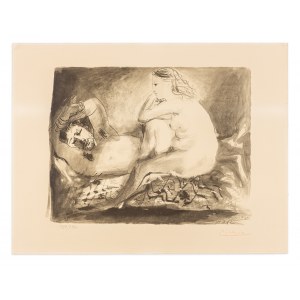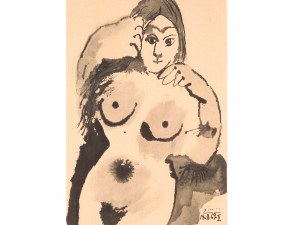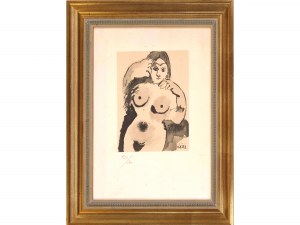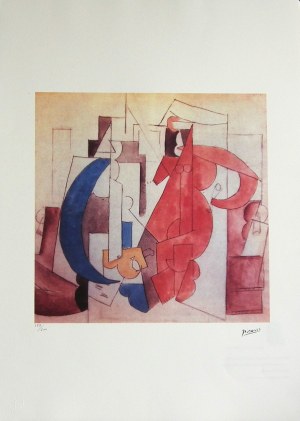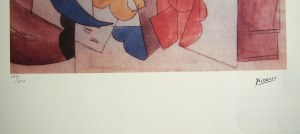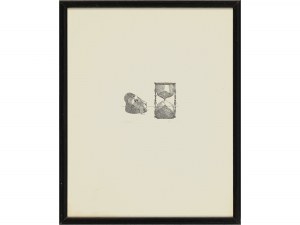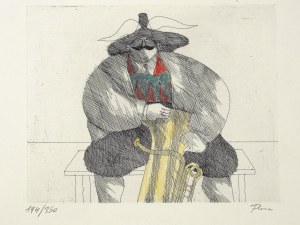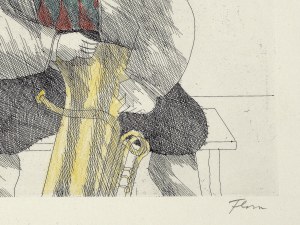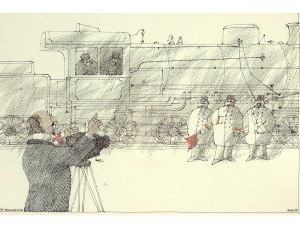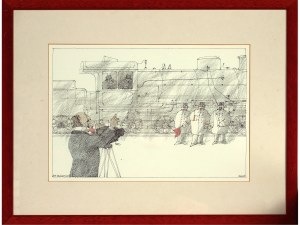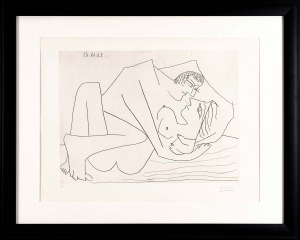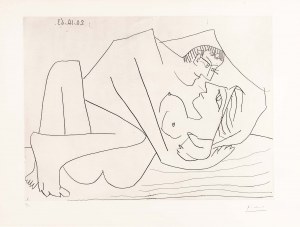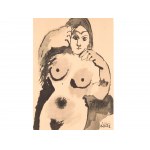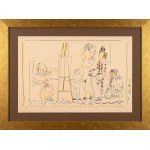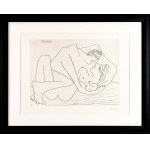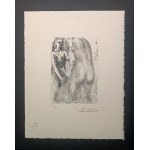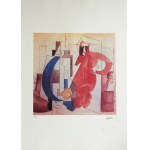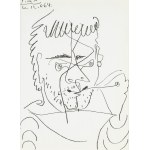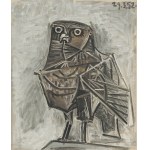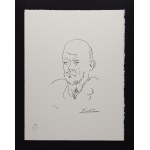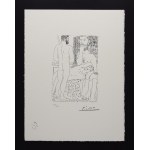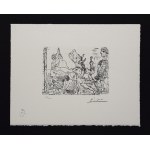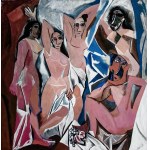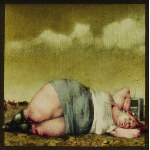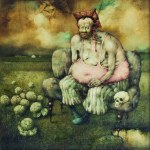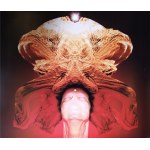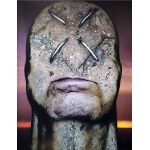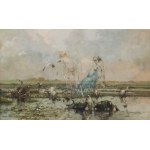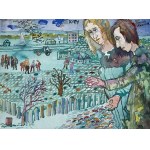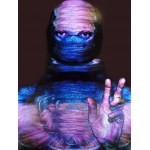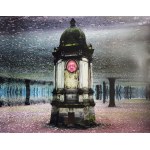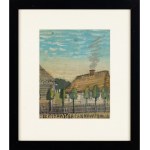Offset lithograph; arcuate dimensions: 48 x 62.5 cm; signed fawn p.d.: Picasso 13 D. 42. Beneath the composition facsimile in red ink of Picasso. L.d.: 1202/2000 Edited by Au Vent d' Arles éditeur, 1967.
Spanish painter, sculptor, printmaker and ceramicist, considered one of the most outstanding artists of the 20th century. He and Georges Braque are the creators of the trend of painting called Cubism. from an early age Pablo revealed his talent for painting and art. He was first educated in Spain, then in Paris (1901-1922), where he was greatly influenced by his encounter with the Post-Impressionists (including Henri de Toulouse-Lautrec, who had a strong influence on his pre-1901 work). Picasso's works from 1901-1904 are referred to as the Blue Period. These were works maintained in melancholic colors, depicting subjects and figures of poor people (Life, The Old Guitarist, Two Sisters, The Ironworker). His studio was located on La Boetie Street. From 1904, he lived in the Bateau-Lavoir at 13 Ravignan St. After this period, Picasso's work entered the pink period, including scenes of circus life (Girl on a Ball, Jugglers, Toilet, Harlequin Family). From 1907 Picasso, influenced by Paul Cézanne and Iberian and African art, began creative experiments with geometrization and simplification of form, which gave rise to Cubism (Virgins of Avignon, Portrait of Gertrude Stein). In the further period after his collaboration with Georges Brac, the principles of analytical, hermetic and synthetic cubism crystallized. Considered the manifesto of Cubism was the premiere of the stage work Parades to a libretto by Jean Cocteau, with music by Erik Satie and set design by Picasso. It was staged in 1917 by Sergei Diaghilev's "Russian Ballets." The following years were characterized by constant creative exploration. When the Spanish Civil War broke out, he took the Republican side, and in 1937, commissioned by the Republican government of Spain for 200,000 pesetas, he painted the famous Guernica, a painting exhibited in the Pavilion of Spain at the World Exhibition in Paris. He spent the period of World War II in Paris, joined the French Communist Party in 1944, and after the war became involved on the side of the leftist and peace movements. In 1946 he moved to the Côte d'Azur. In 1948 he settled in Vallauris. In 1948 Picasso came to Poland, participated in the World Congress of Intellectuals for Peace in Wroclaw, Poland, and visited Warsaw, where he donated his collection of ceramics, drawings and color prints to the National Museum. Signatory of the Stockholm Appeal in 1950. In 1950 he received the International Lenin Peace Prize (then called the Stalin Prize). In the 1940s he painted anti-war paintings (Massacre in Korea, War, Peace). Picasso's post-war period of work is very rich, diverse and defies classification.
Recently viewed
Please log in to see lots list
Favourites
Please log in to see lots list



